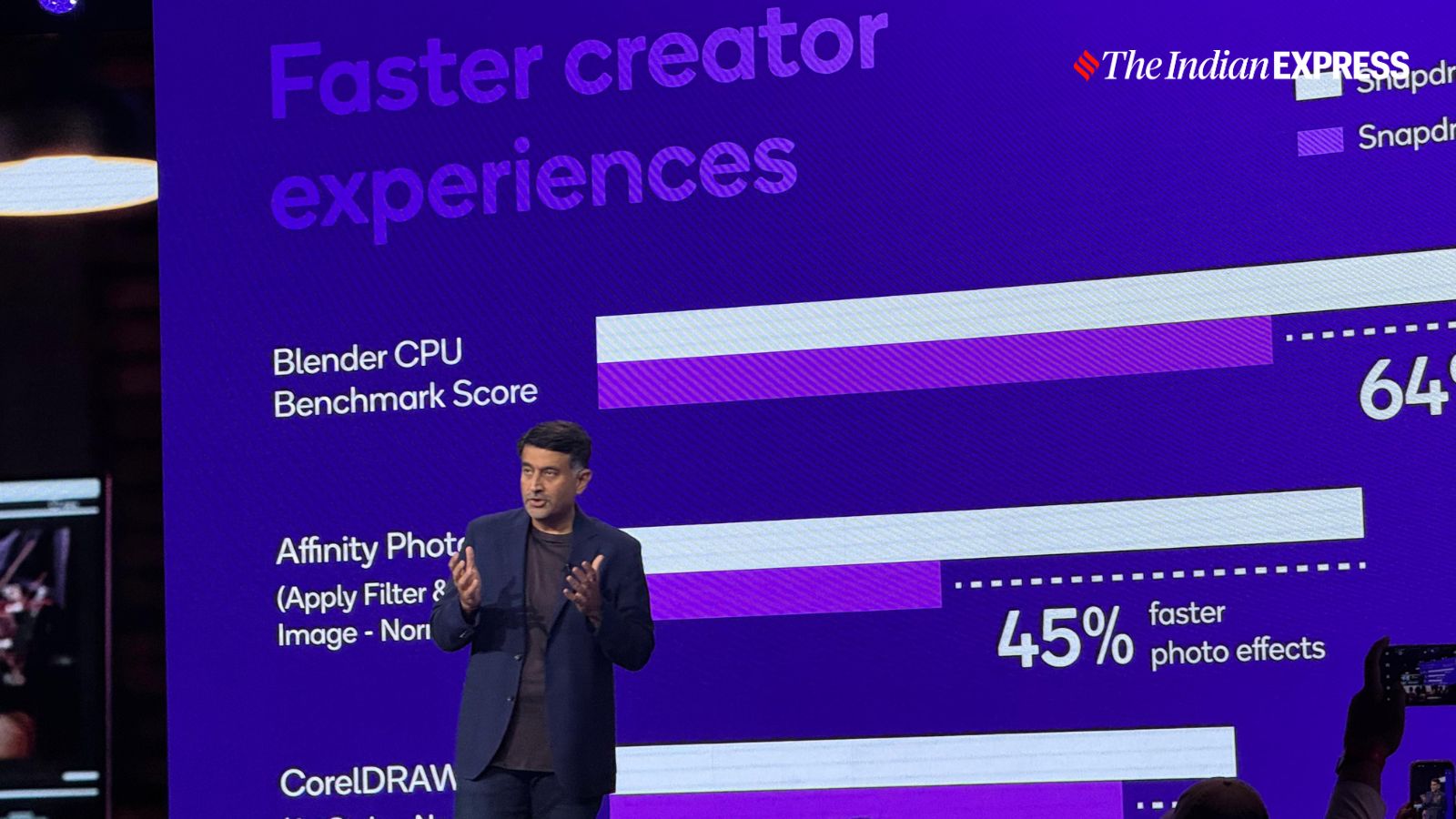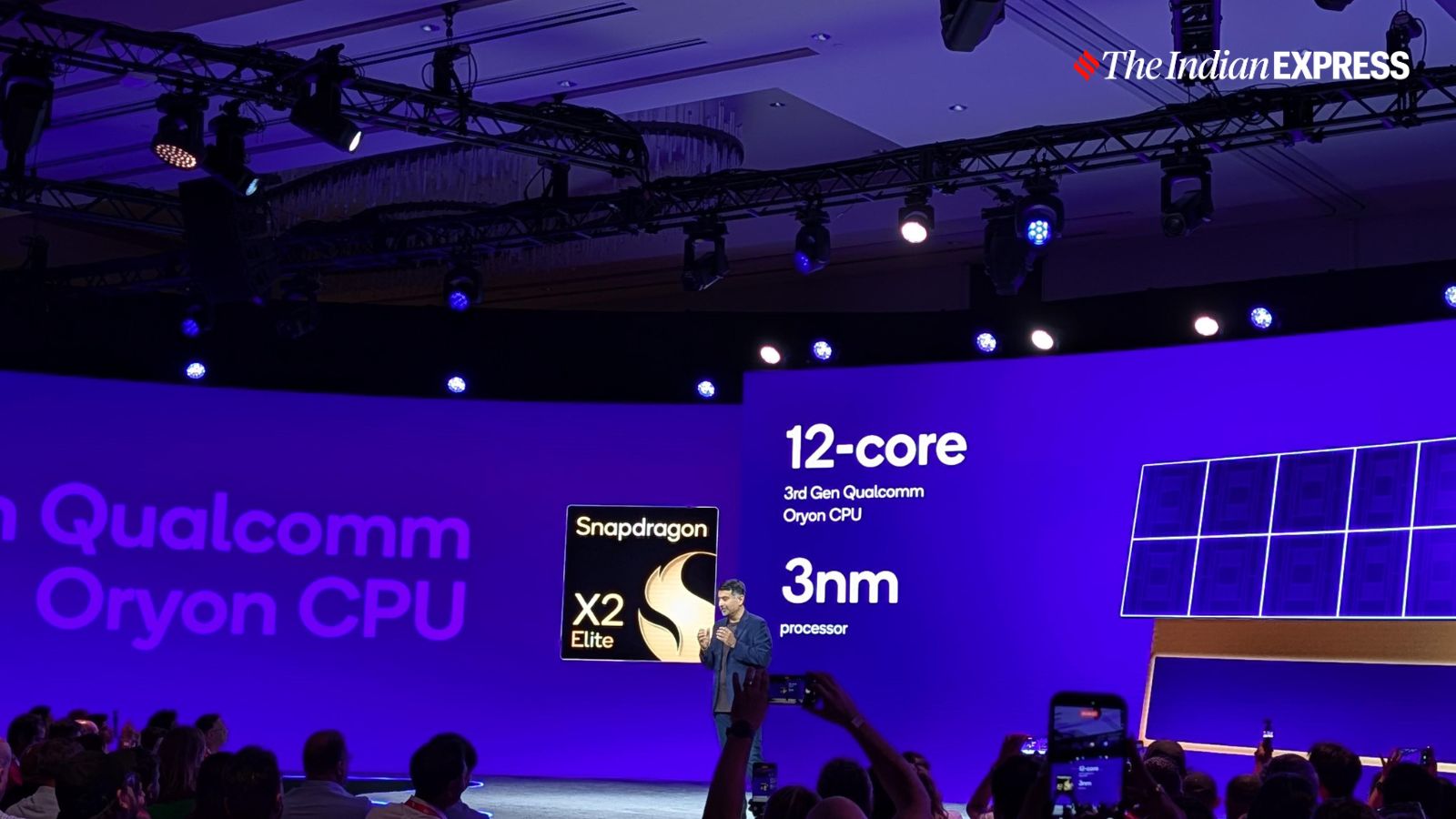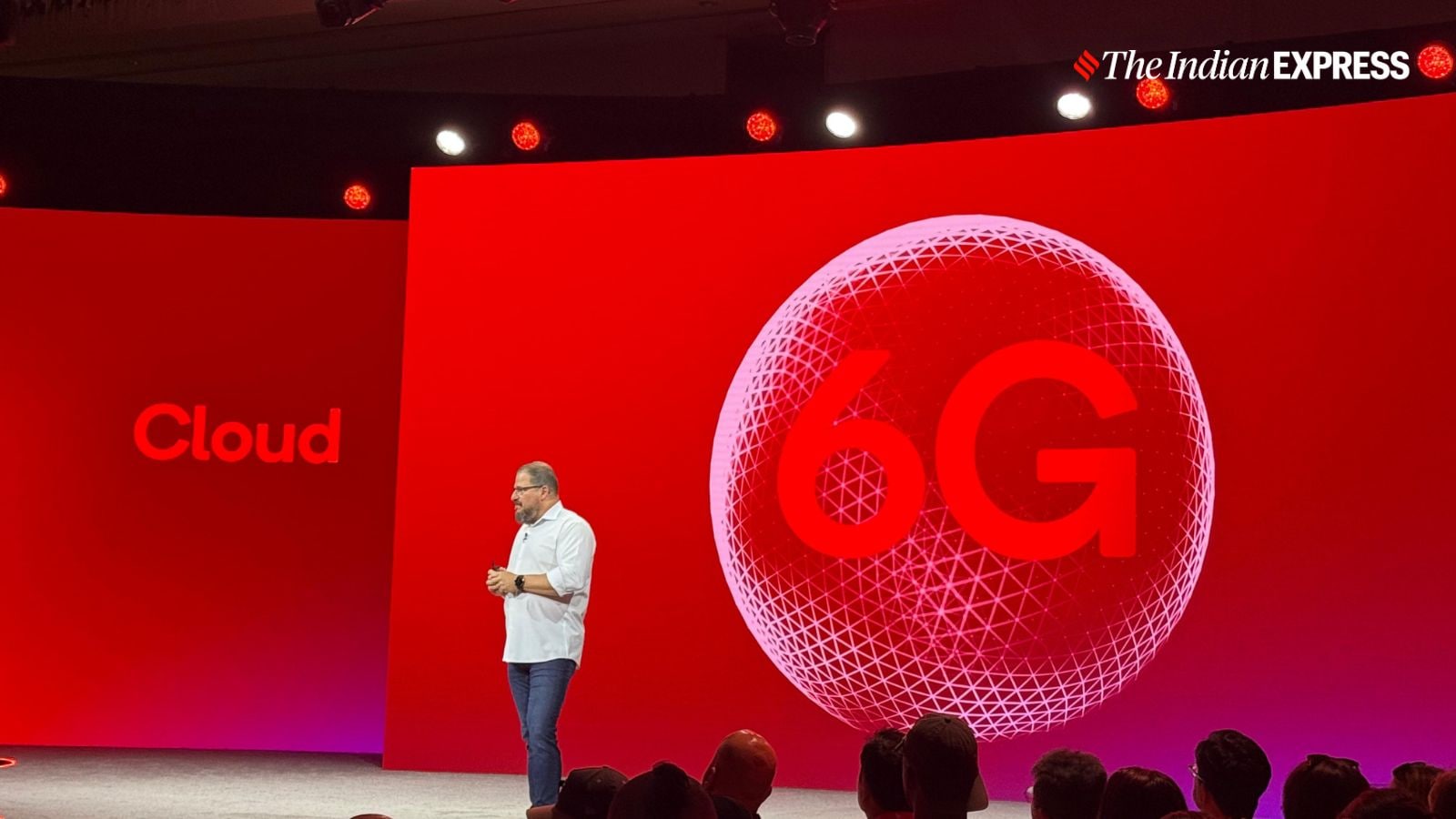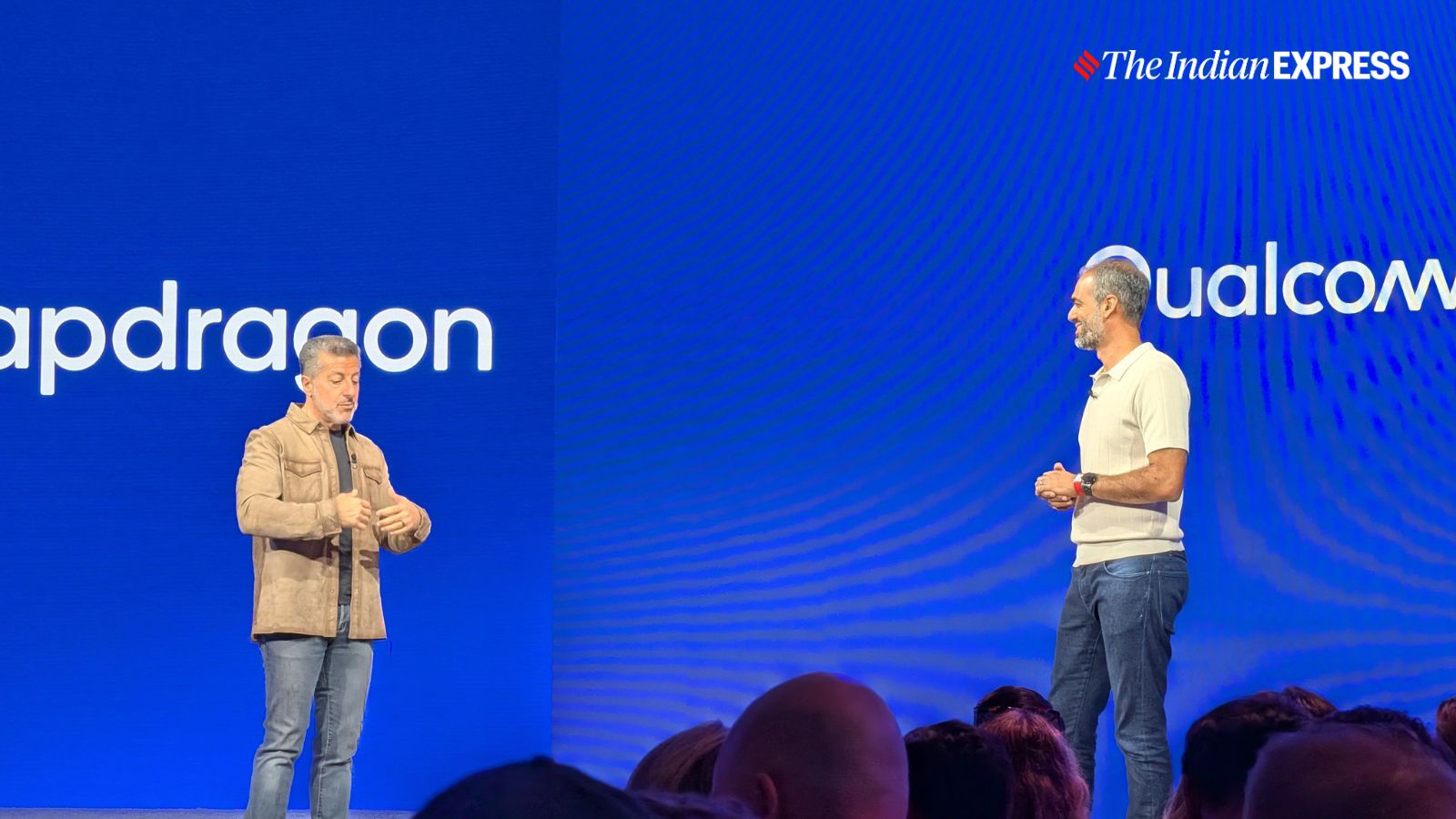
In case you missed out catching the livestream or you want to rewatch one of the biggest announcements from the event, here’s a refresher from the Snapdragon Summit (including my takeaways from the event)
A new flagship smartphone chip
Qualcomm’s bread and butter remains developing mobile processors for smartphones, including a critical component of a smartphone’s inner workings: the processor, or the “brain” of the phone – along with associated technologies like the modem. After all, these are the biggest revenue generators for the San Diego-based company. As expected at the Snapdragon Summit, Qualcomm unveiled the Snapdragon 8 Elite Gen 5, the processor that will power upcoming Android flagship phones, with Samsung, Xiaomi, Honor, and OnePlus leading the first wave of devices built around the new chip.
Qualcomm claims its Snapdragon 8 Elite Gen 5 is the “fastest mobile CPU in the world,” boasting a record clock speed of 4.6 GHz (compared to Apple’s A19 Pro, which powers the iPhone 17 Pro Max, at 4.26 GHz). The company touts significant performance gains, including a 23 per cent faster GPU and a 37 per cent faster NPU. Whether these claims hold up will be determined once review units arrive, but a faster GPU could have an especially big impact on mobile gaming.
 A Qualcomm executive presents performance benchmarks for creator tools at the Snapdragon Summit 2025, highlighting up to 64 per cent faster CPU performance and 45 per cent faster photo effects with the new Snapdragon X2 Elite chip. (Image: Anuj Bhatia/The Indian Express)
A Qualcomm executive presents performance benchmarks for creator tools at the Snapdragon Summit 2025, highlighting up to 64 per cent faster CPU performance and 45 per cent faster photo effects with the new Snapdragon X2 Elite chip. (Image: Anuj Bhatia/The Indian Express)
Like Apple, Qualcomm also claims its new mobile processor brings speed improvements to a phone’s performance. However, there are three particularly interesting aspects of the new chip that haven’t been highlighted. One of them is Qualcomm’s Personal Scribe – an agentic AI assistant powered by the new Sensing Hub that learns your habits to make recommendations and act on your behalf. Deeply integrated at the chip level, the assistant delivers a highly personalised experience. It will be interesting to see how smartphone brands implement this feature, which learns about your behaviour and operates across your apps and services.
Another highlight of the new Snapdragon chip is how Qualcomm is going after the creator market with an advanced video recording feature in the Professional Video Codec, bringing crisp HDR footage that’s easier to edit without quality loss. While each smartphone maker does a lot of finetuning to the camera, this new chip-level feature offers a recording feature that’s aimed at content creators. The “near-lossless” codec, created in partnership with Samsung, is an answer to Apple’s ProRes format.
Story continues below this ad
The new mobile chip also includes Snapdragon Audio Sense, a microphone technology with wind noise rejection, audio zoom, and HDR audio, enabling 24-bit audio recording in any environment without needing external microphones.
While the Snapdragon 8 Elite Gen 5 remains a flagship processor, Qualcomm pulled a surprise by announcing a second premium-tier processor. Details are limited for now, but the Snapdragon 8 Gen 5 will sit below the flagship model. The strategy mirrors Apple’s two-chip iPhone approach: offering two mobile chips, with the latter expanding on the premium smartphone experience at a slightly lower price.
New chips like these are critical for a company like Qualcomm to stay competitive. Although competition from MediaTek and Apple is getting stiff, smartphones still remain the de facto centerpiece of the incumbent ecosystem. Qualcomm may already be talking about agentic AI and AI assistants that could one day replace apps, and eventually, smartphones might no longer be central, potentially giving way to smart glasses. Truth be told, phones aren’t going anywhere, at least for now. While the longevity of smartphones is increasing and fewer consumers are willing to replace their phones every year as they used to, smartphones are not likely to be replaced by smart glasses anytime soon.
Beefier computing chips, with a focus on business customers
Although Qualcomm is still a new player in the PC market, it aims to compete with veteran players like Intel and AMD, as well as Apple, which designs its own M-series chips for Mac computers. The company’s newly announced X2 Elite and X2 Elite Extreme chips, which will appear in some of the top laptops and other PCs over the next year, are powerful, with the latter processor reaching clock speeds of up to 5 GHz. The new processors feature the third-generation Oryon CPU with up to 18 cores – six more than their predecessors. Qualcomm’s big bet with these processors is that by distributing workloads across the CPU, GPU, and NPU, power consumption will be optimized without any drop in performance.
Story continues below this ad
 Qualcomm’s X2 Elite and X2 Elite Extreme chips take on PC processors from Intel, AMD and Apple. (Image credit: Anuj Bhatia/Indian Express)
Qualcomm’s X2 Elite and X2 Elite Extreme chips take on PC processors from Intel, AMD and Apple. (Image credit: Anuj Bhatia/Indian Express)
These chips also lean heavily on AI, bringing multimodal content generation and agentic AI to the forefront. In fact, the X2 Elite can deliver up to 80 TOPS of AI processing, enabling the most advanced Windows-powered Copilot Plus PCs. Meanwhile, Qualcomm’s partnership with Adobe, which offers a creative suite of apps including Photoshop, Lightroom, and Premiere Pro, means laptops powered by the new chips will deliver up to 47 per cent faster performance.
In addition, Qualcomm’s new PC chips support lightning-fast 5G with speeds up to 10 Gbps, a major advantage for connectivity. The focus on PC gaming also promises faster performance and smoother graphics, allowing demanding games to run seamlessly. The big takeaway is that Qualcomm is gradually targeting enterprises and business (and even PC gamers) users with these new chips, which will power some of the best and fastest Windows laptops starting next year.
Qualcomm promises “pre-commercial 6G devices” will be here in three years
5G is everywhere. Maybe it’s no longer talked about much, but a few years ago, it was the most buzzed-about technology. Similarly, we may start hearing a lot about 6G, the new wireless connectivity standard, in the coming months. Qualcomm says 6G is coming soon and will eventually replace 5G. You might be wondering what 6G actually means. Sure, it will be super fast and increase network speeds, but it’s expected to be very different from 5G – at least in terms of use cases.
 During the Snapdragon Summit keynote, Qualcomm CEO Cristiano Amon drew attention to 6G, the next-gen connectivity standard. (Image credit: Anuj Bhatia/Indian Express)
During the Snapdragon Summit keynote, Qualcomm CEO Cristiano Amon drew attention to 6G, the next-gen connectivity standard. (Image credit: Anuj Bhatia/Indian Express)
During the Snapdragon Summit keynote, Qualcomm CEO Cristiano Amon said, “6G is designed to be the connection between the cloud and edge devices.” What does that mean? Amon explains that it will be “a network intelligent enough to perceive sensor data.” He implies that a new level of connectivity is needed for a world where AI must process sensor data at the edge, whether from your phone or a pair of smart glasses, and then train on that data from the real world around you. Amon adds that 6G will focus on “connecting the edge and the cloud, merging not only the physical and digital, but also creating entirely new experiences.”
Story continues below this ad
Amon further predicted that the change is already underway. “We are ready to have pre-commercial devices as early as 2028. When that happens, we have context-aware intelligence at scale – and it’s going to happen everywhere.” Expect to hear more about 6G early next year.
Google’s comeback into the PC market
ChromeOS is dead, whether Google admits it or not. Nor is Android a replacement for ChromeOS. Perhaps Google has a solution to this problem… why not merge Android and ChromeOS? Well, that’s going to happen next year. Rick Osterloh, senior vice president of platforms and devices at Google, and Android chief Samir Samant both took the stage at this week’s Snapdragon Summit in Hawaii to confirm that Android for PC is coming next year.
 Google’s Sameer Samat explains the next chapter for Android and ChromeOS. (Image credit: Anuj Bhatia/Indian Express)
Google’s Sameer Samat explains the next chapter for Android and ChromeOS. (Image credit: Anuj Bhatia/Indian Express)
Osterloh, who oversees both Google’s hardware and Android divisions, shared some details about the project. “We’re building together a technical foundation for our products on PCs and desktop computing systems,” he said. “This is another way we can leverage all of the great work we are doing on our AI stack, our full stack, bringing Gemini models, the Assistant, and our applications and developer community into the PC domain.”
Exactly how the combined OS will look is still unknown, but Qualcomm’s involvement indicates that both companies are up to something. It’s just that neither is ready to share more details.
Story continues below this ad
“If you think about the laptop form factor, we have had ChromeOS for a long time, and we are super committed to that platform. It’s been really successful for us, and we have learned a lot from it. We also have Android tablets that have been very successful; they are becoming more productivity-focused all the time. So the opportunity we see is how we can accelerate all the AI advancements we are doing on Android and bring them to the laptop form factor as rapidly as possible, while ensuring the laptop and the rest of the Android ecosystem work seamlessly together,” Samant said about merging Android and ChromeOS at the Snapdragon Summit.
“So what we are doing is basically taking the ChromeOS experience and re-baselining the technology underneath it on Android. That combination is something we’re very excited about for next year, and we are working with partners on it, and we can’t wait.”
ChromeOS has long been a lightweight OS for computers and laptops. The OS has seen many changes over the years, but it has sadly never evolved to become something like Windows or macOS. However, with Google going all-in on Gemini, it may bring new experiences to the company’s big-screen OS, giving it a clear purpose in the AI-ready world.



 A Qualcomm executive presents performance benchmarks for creator tools at the Snapdragon Summit 2025, highlighting up to 64 per cent faster CPU performance and 45 per cent faster photo effects with the new Snapdragon X2 Elite chip. (Image: Anuj Bhatia/The Indian Express)
A Qualcomm executive presents performance benchmarks for creator tools at the Snapdragon Summit 2025, highlighting up to 64 per cent faster CPU performance and 45 per cent faster photo effects with the new Snapdragon X2 Elite chip. (Image: Anuj Bhatia/The Indian Express) Qualcomm’s X2 Elite and X2 Elite Extreme chips take on PC processors from Intel, AMD and Apple. (Image credit: Anuj Bhatia/
Qualcomm’s X2 Elite and X2 Elite Extreme chips take on PC processors from Intel, AMD and Apple. (Image credit: Anuj Bhatia/ During the Snapdragon Summit keynote, Qualcomm CEO Cristiano Amon drew attention to 6G, the next-gen connectivity standard. (Image credit: Anuj Bhatia/Indian Express)
During the Snapdragon Summit keynote, Qualcomm CEO Cristiano Amon drew attention to 6G, the next-gen connectivity standard. (Image credit: Anuj Bhatia/Indian Express) Google’s Sameer Samat explains the next chapter for Android and ChromeOS. (Image credit: Anuj Bhatia/Indian Express)
Google’s Sameer Samat explains the next chapter for Android and ChromeOS. (Image credit: Anuj Bhatia/Indian Express)





